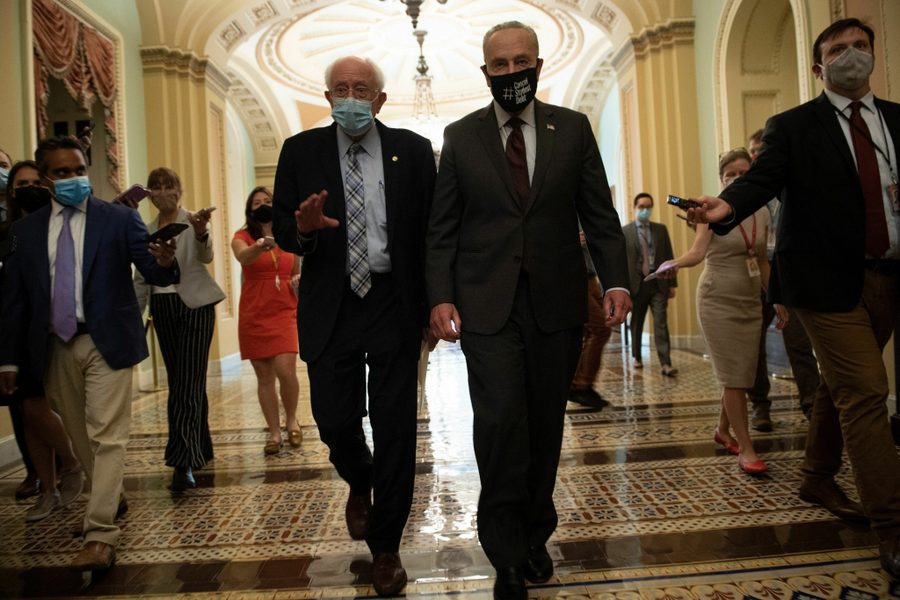The Political Magic of the Democrats’ Infrastructure Plan
Biden and the Democrats have put forward proposals that would finally invest in public services that help humans flourish.
Rick Perlstein

When I took up fishing, the first thing I had to master was a trick to keep my hook from snagging vegetation below the surface by using a “Texas rig.”
The Texas rig was invented in Texas because the fishing lakes there were created from rivers dammed for hydroelectric power. Basically, they’re submerged forests. Which is why so many of the lakes hosting the professional bass fishing tournaments I watch obsessively on YouTube are named after long-dead Democratic politicians — they’re the ones who corralled the federal money to build them. Sam Rayburn Reservoir in Texas, Robert S. Kerr Reservoir in Oklahoma, Ross Barnett Reservoir in Mississippi — each lake is a fish-filled billboard for the enduring value of the New Deal and former President Franklin D. Roosevelt’s Tennessee Valley Authority, which electrified vast swaths of the rural South for the first time. That’s the political magic of infrastructure.
As the idea spread across the nation, the benefits these dams provided — jobs, cheap electric power, stable and reliable fresh water, flood control, recreation — help explain why Republicans (anguished at the political advantages post-New Deal Democrats were enjoying) used to complain, “No one shoots Santa Claus!”
Ah, but as the social critic Eric Hoffer once said, “Every great cause begins as a movement, becomes a business and eventually degenerates into a racket.”
Review the names of those dead politicians again. Ross Barnett, governor of Mississippi from 1960 to 1964, was a segregationist thug. Delivering public works jobs to white people (and denying them to Black people) was one of the ways his ilk kept the “Southern way of life” in working order.
Industrial titan Robert Kerr, governor of and then senator from Oklahoma, was one of the most corrupt politicians in U.S. history. When he was the Senate Rivers and Harbors Subcommittee chairman, Kerr steered $300 million a year in public funds to create the McClellan – Kerr Arkansas River Navigation System, using taxpayer subsidies to multiply the value of his own real estate investments along the way. In his spirit, many federal water projects thereafter were dogged by corruption and inefficiency — as President Jimmy Carter discovered once he began reviewing them. One such project delivered a nickel of taxpayer benefit for every dollar it cost. Carter unceremoniously canceled more than a dozen of them. The 1970s were also when the ecological damage of massive river impoundments began to receive attention— helping scuttle more ill-conceived boondoggles.
But when the projects went away, with them went those billboards advertising all the good that government action can do for ordinary people, a message easily understood by those who might be disinclined to otherwise trust government for all sorts of reasons — like racism, a misplaced hyper-individualism, or susceptibility to right-wing propaganda.
That’s why President Joe Biden’s infrastructure proposal is so potentially powerful. If it succeeds, billboards for the good government can do will be everywhere — in repaved highways, in 100% high-speed broadband coverage, in the remediation of the environment, in electric-car charging stations and sustainable power facilities.
Biden’s American Families Plan would provide for investment in that other form of infrastructure: public services that help humans flourish. Initiatives such as affordable childcare and tuition-free higher education would ameliorate the racialized inequality once used to sabotage the common good.
Not all projects will be on public display— think mine cleanups and lead pipe remediation. The good union jobs all these initiatives create, however, will be in the public eye. Blue-collar workers will be able to afford fishing cabins again. And once they realize, slowly but surely, which political party is responsible for progress — and which party fought it every step of the way — then, my friends… The sky’s the limit.
Rick Perlstein, an In These Times board member, is the author of Reaganland: America’s Right Turn, 1976-1980 (2020), The Invisible Bridge: The Fall of Nixon and the Rise of Reagan (2014), Nixonland: The Rise of a President and the Fracturing of America (2008), a New York Times bestseller picked as one of the best nonfiction books of the year by over a dozen publications, and Before the Storm: Barry Goldwater and the Unmaking of the American Consensus, winner of the 2001 Los Angeles Times Book Award for history. Currently, he is working on a book to be subtitled How America Got This Way.









